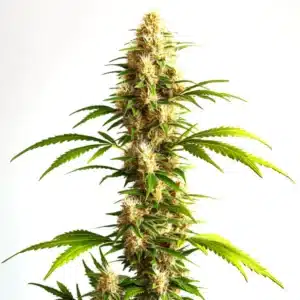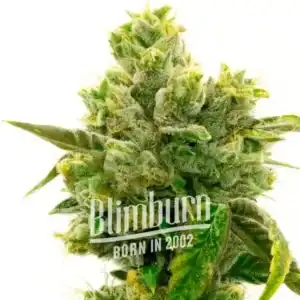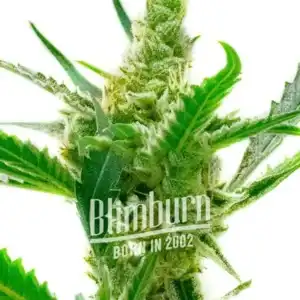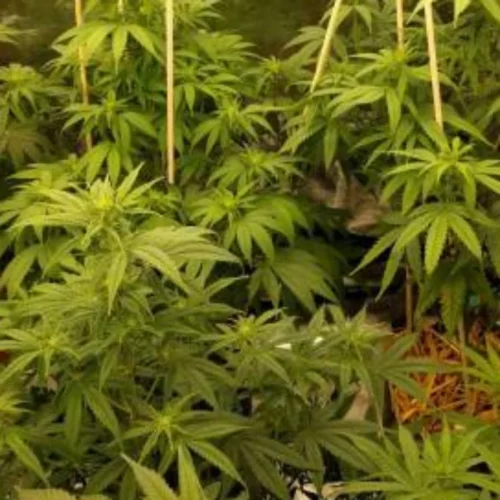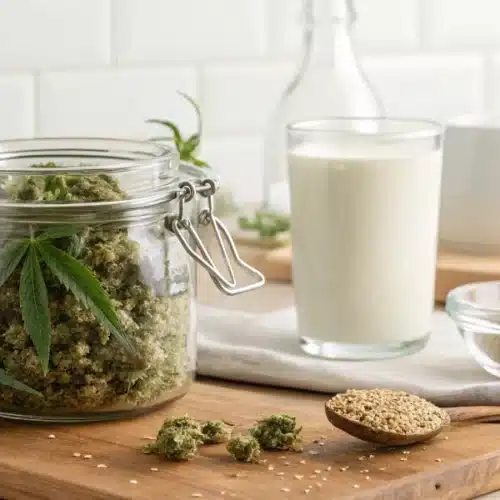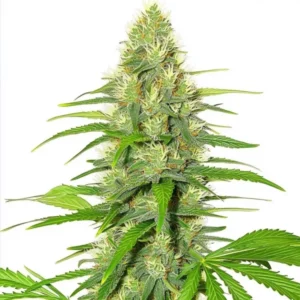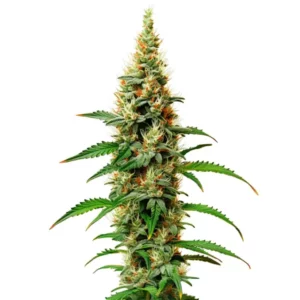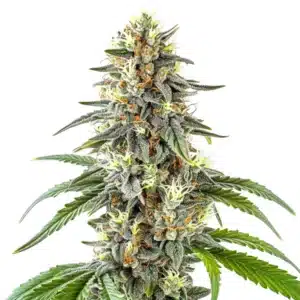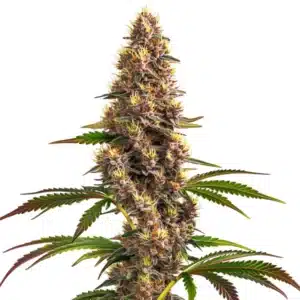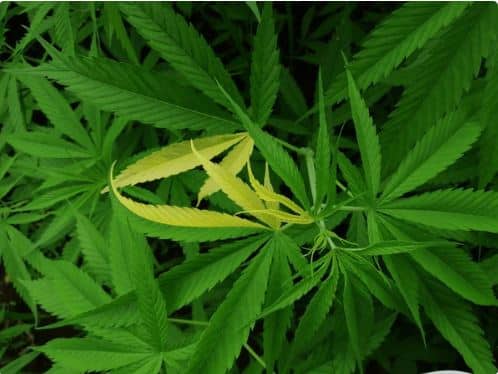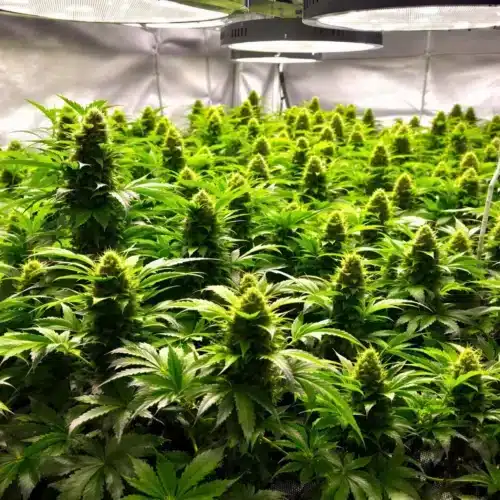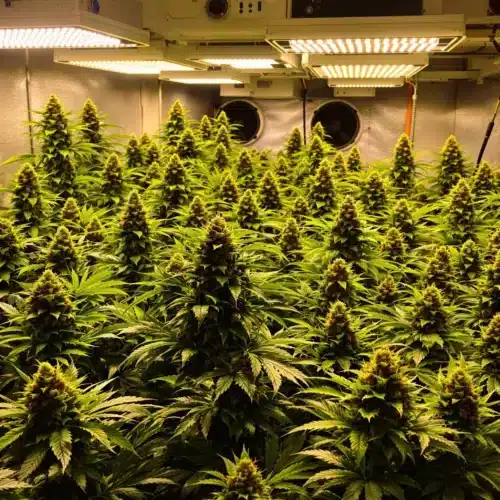Pure white cannabis plants are the result of albinism (or White Colored Weed), meaning it is an albino plant. As in animals, albinism occurs in the plant world and is the result of a lack of pigmentation. The pigment that makes the parts of the cannabis plant green is chlorophyll. This is an essential component for plants and is of vital importance for their photosynthesis process.
Chlorophyll is a vital compound for the life of all plants. Without it, plants cannot perform photosynthesis, the process by which they transform absorbed light into chemical energy. Thanks to this, they can make sugars to feed and survive. Without chlorophyll, marijuana plants couldn’t absorb light and would end up dying. However, it is not complete albinism but a partial one. In other words, due to the lack of pigments, albinism develops only in some areas, giving rise to white-looking weed.
On the other hand, in other areas, those that are green, photosynthesis is carried out, which allows these White Weed plants to develop. Therefore, the plant will not have to supply nutrients to its white areas, and they will grow and flourish without a problem.
White weed strains, like Albino Kush strain or marijuana white buds, highlight a type of plant with unique characteristics.
Reasons for albinism in cannabis plants
Albinism can occur for various reasons, from genetic factors to environmental conditions. , raising the question: can weed be white? Among the environmental conditions, the culture substrate, light, and temperature stand out, raising the question: what does it mean when weed is white? Genetic factors are undoubtedly the most interesting and important. Albinism has been known to be a recessive trait.
In other words, this defect that causes the plant to not develop chlorophyll is not expressed in the first generation of a cross, but rather a back cross must be made with the plant that shows albino traits for it to be expressed. Even so, white marijuana, la marijuana albina, or albino marijuana plants are still very rare. The most common are variegated cannabis plants, which show a mix of green and white coloring due to irregular chlorophyll production.
Variegation is very common in many plant species. This process consists of a change in the color pattern of the green areas. It can be due to different factors and can only be seen in the green structures of the plant. There are some genes that control the production of chlorophyll in marijuana and, as you already know, it is these pigments that are responsible for giving your plants that greenish color, distinguishing them from all white bud. This results in plants with white edges of the leaves and intermediate discolored areas, sometimes referred to as White Weed when the condition appears in cannabis plants.
On the other hand, there is the one produced by environmental conditions, also called lacking albinism or forced albinism. An albino marijuana plant may owe its color to lighting. Overexposure to very high light intensity can cause whitening in the most exposed areas. It is usually common indoors when plants grow excessively and get too close to the lighting system. In these cases, both buds and leaves usually take on a whitish appearance, which can contribute to the development of White Weed traits.
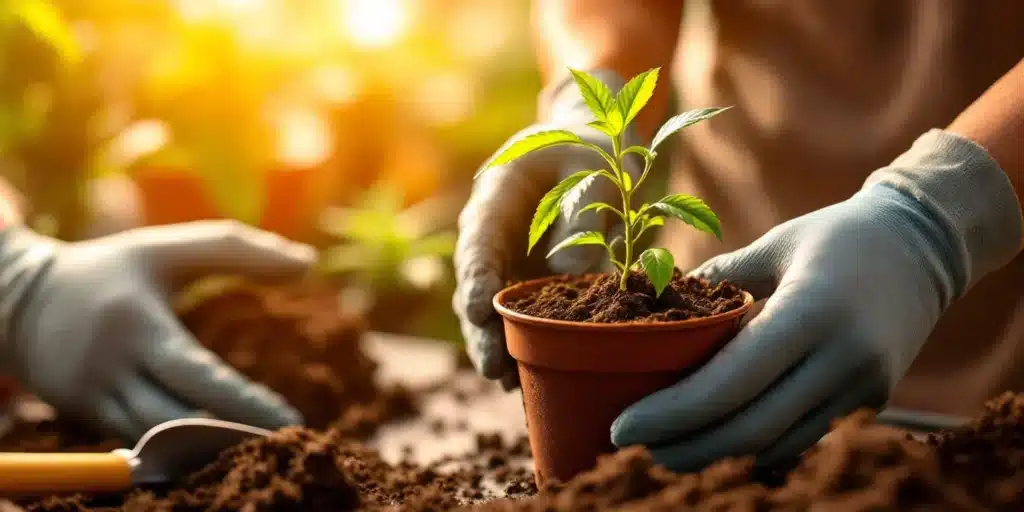
Promos & Deals
Differences between albino plants and discolored cannabis plants
Of course, we must bear in mind that an albino or white marijuana plant is not the same as a discolored plant. What is the difference between them? Well, it’s very simple. A discolored marijuana plant, as its name suggests, is one that has lost its color because it has been too close to the focus or exposed to too much light intensity. In these cases, the grower is responsible for the paleness of the plant which has caused it to lose its chlorophyll photopigments and its quality. Of course, as a decorative plant, it has a really striking color effect, but when it comes to smoking it, it will have lost a lot of value.
The secret of an albino plant is not in the little skill of the grower, but hidden in the plant’s own genetics. Far from being plants whitened by excess light, what we find is a disconcerting natural phenomenon called variegation. Variegation is a rare, but absolutely real genetic abnormality.
There are some genes that control the production of chlorophyll in marijuana and, as you already know, it is these pigments that are responsible for giving your plants that greenish color. Variegation is a mutation that decompensates the presence of chlorophyll in the plant, giving rise to those markedly albino traits that can basically manifest in two ways:
In a single area of the plant (such as just the buds) or in various areas of the plant, interspersed with pigmented areas (as if the green and albino patterns were intertwined). This mutation can result in what is commonly referred to as White Weed, where parts of the plant, or in extreme cases the entire plant, take on a white appearance due to a lack of chlorophyll. There is an extreme case in which the origin of the white color of the plant would be in the so-called double albino gene. In these cases, the entire marijuana plant would be white and would not have any option to perform photosynthesis (chlorophyll is what allows them to synthesize light), so it would die in a very short time. Therefore, it would be very difficult for you to find a plant of these characteristics that has managed to develop.
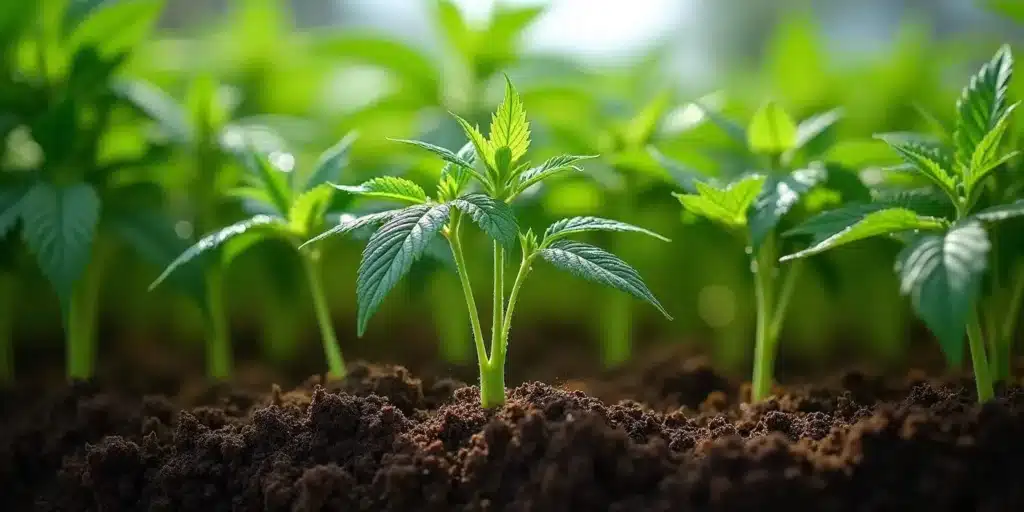
Tips for growing albino cannabis
Whether due to a lighting error or an unexpected breeding issue, there may be a few ways to salvage a plant that has started to show white coloration or white weed leaf discoloration. Very early research found that feeding sugars to plants in the absence of light will help them grow and bulk up. However, plant growth may be abnormal and gains slight.
Another recommended option has to do with lighting settings. Perhaps by changing your LED lighting system for a lower power one, you can avoid intense bleaching of the plant. It can also be beneficial to adjust the height of the light. By moving the light away from the top of the plants, you can prevent bleaching if the intensity is too strong. If not, you can move the lights closer to the plant to provide adequate lumens. But be careful! The light should not be too close to plants showing signs of heat stress.
If a plant is white from the seedling stage, it is probably due to genetics. Some experts say that white cannabis plants will produce less THC and CBD than a green plant, raising the question: is white weed good? This is true because white plants have less energy than they need so they will have even more difficulty producing cannabinoids. Therefore, they will not be good for medicinal use and even less for recreational use.
Cannabis albino by the genetics
We have already said that albinism can be caused by a genetic issue. Now, we are going to deepen this point, because as in humans, albinism in cannabis plants is caused by a genetic anomaly. There are particular cases of albinism in plants such as the albino sequoia on the California coast that does not produce any photosynthesis and yet remains alive.
This can be achieved thanks to the fact that it feeds as if it were a parasite of the nutrients that a large tree can deliver, acting as its source of nutrients. This allows it to develop in a way that is not robust, but smaller and less vigorous, often referred to as albino goodies. We add that in the hybridization process, albino traits in a strain can also be highlighted because to hybridize a plant, breeders often backcross strains to highlight certain recessive genetic traits such as its flavor, aroma, types of effects, etc. So, in some cases, it is possible that hybridization allows the albino characteristics of a certain variety of cannabis to be expressed more frequently.
In short, albinism is a genetic problem that does not provide remarkable benefits. In general, albino plants or those that show an albino place among their flowers are not more powerful, nor are they more productive. In other words, they have nothing special. The phenomenon of low power in this type of plants is due to the fact that they cannot carry out photosynthesis and they produce few cannabinoids which are responsible for making you feel high.
When looking for a seed bank with a catalog of over 800 strains including feminized, regular, fast version, autoflowering, cbd and cbg, blimburnseeds.com certainly fits the bill. We are a bank with over 20 years of experience working with great masters of cultivation including STEVE DEANGELO, NIKKI & SWAMI, and KYLE KUSHMAN who have collaborated with BLIMBURN to create their own line of feminized seeds of first level in terms of genetics, flavors, and terpene profile.
Remember that Blimburnseeds.com has an extensive catalog with high THC strains that exceed 30% and seeds perfect for indoor and outdoor growing. Many of our genetics have been grown in large greenhouses under artificial light to obtain the best selection of feminized, regular, fast version, autoflowering, cbd and cbg seeds of high quality. In addition, our germination rate exceeds 90%. When our customers, breeders, and growers have any doubts with their crop, we help them at all times with our ticker system so that beautiful marijuana plants provide them with resinous buds full of happiness.


